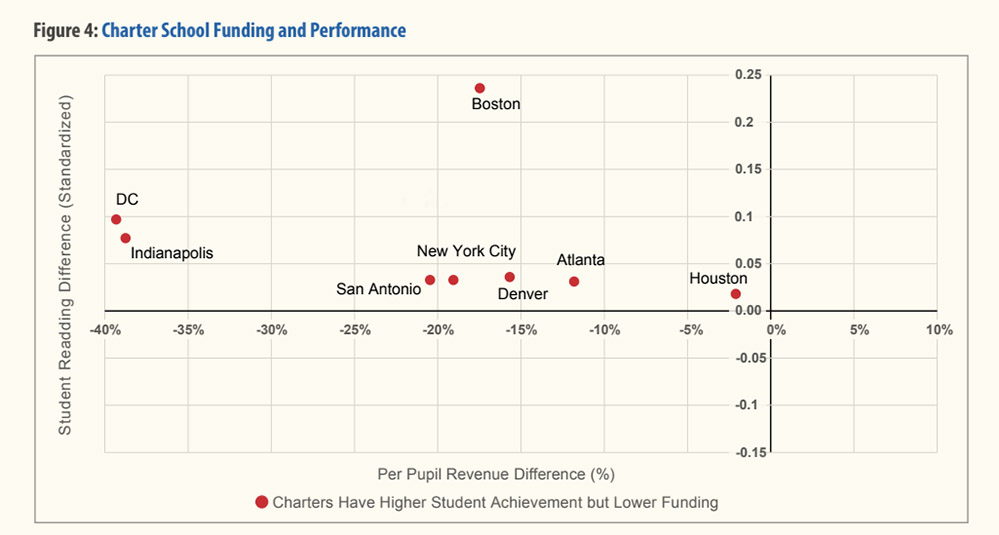Return on Investment: Study Shows Big-City Charters Use Education Dollars More Effectively — and Provide Better Future Earnings for Students — Than District Schools

Charter schools educate their students more efficiently than traditional public schools, according to a new analysis of financial and testing data in eight major cities. A head-to-head comparison of student academic results suggests that charters, which tend to receive less financial support from state governments, nevertheless take greater advantage of the resources provided to them, the authors argue.
The study was co-authored by Patrick Wolf, a professor of education policy at the University of Arkansas’s Department of Education Reform, and Corey DeAngelis, a policy analyst at the libertarian Cato Institute. The pair have each written previous explorations of funding disparities between traditional public schools and charters in New York City and elsewhere.
Using funding data from FY 2014, the researchers examined student learning outcomes from both district and charter sectors in Atlanta, Boston, Denver, Houston, Indianapolis, New York City, San Antonio, and Washington, D.C. Eighth-grade math and reading results for the biannual National Assessment of Educational Progress — commonly referred to as the “nation’s report card” — were used as an academic indicator.
In a study of cost-effectiveness, charter schools in the eight cities yielded an average of 17.76 points on NAEP reading scores per $1,000 spent in per-pupil funds, versus 13.42 points for traditional public schools. In math, charters produced 19.21 NAEP points per $1,000, compared with just 14.48 points for traditional public schools. Those differences amount to charter school advantages of 32 percent and 33 percent, respectively, over their traditional counterparts.
It is important to note that the charter school boost is not identical from place to place. In Houston, charter students enjoyed just a 2 percent edge over traditional public school students on NAEP reading scores; in Washington, D.C., the difference was an astounding 67 percent.

The authors also performed an analysis of the return on investment in terms of future earnings for both charter and district students. Working with evidence on charter learning gains from Stanford’s Center for Research on Educational Outcomes, they estimate that each dollar invested into a child’s K-12 education pays back $6.44 in future earnings for a charter school student — compared with $4.67 per dollar for students in traditional public schools, a 38 percent difference.
These figures also vary significantly based on location. Charters in the District of Columbia, Indianapolis, and Boston all run far ahead of the pack in terms of projected earnings advantage compared with their local districts, but for different reasons. In Boston, charter students were found to achieve much higher than their district school counterparts; in the other two cities, charter students still performed better, but their rate of return is heightened by the severe funding deficits at local charters compared with traditional public schools.

A critical note of caution: Study after study of charter school quality has found that, although charter students nationwide perform roughly as well as students at traditional public schools, urban charters — especially those serving low-income students — have often dramatically outperformed local districts. Explanations for the phenomenon differ; some have credited the rigors of the much-publicized “no-excuses” model, employed by networks like Success Academy and KIPP, emphasizing strict discipline.
In any case, by focusing specifically on urban schools, Wolf and DeAngelis have concentrated on charters’ area of greatest strength.
Still, their findings provide more ammunition for charter advocates, who will likely marshal it in battles over finite education spending. In Massachusetts, where a measure to lift a statewide charter cap was easily defeated in 2016, the education community will have to consider a startling gap in future earnings between students in charters and district schools.
Get stories like these delivered straight to your inbox. Sign up for The 74 Newsletter

;)
